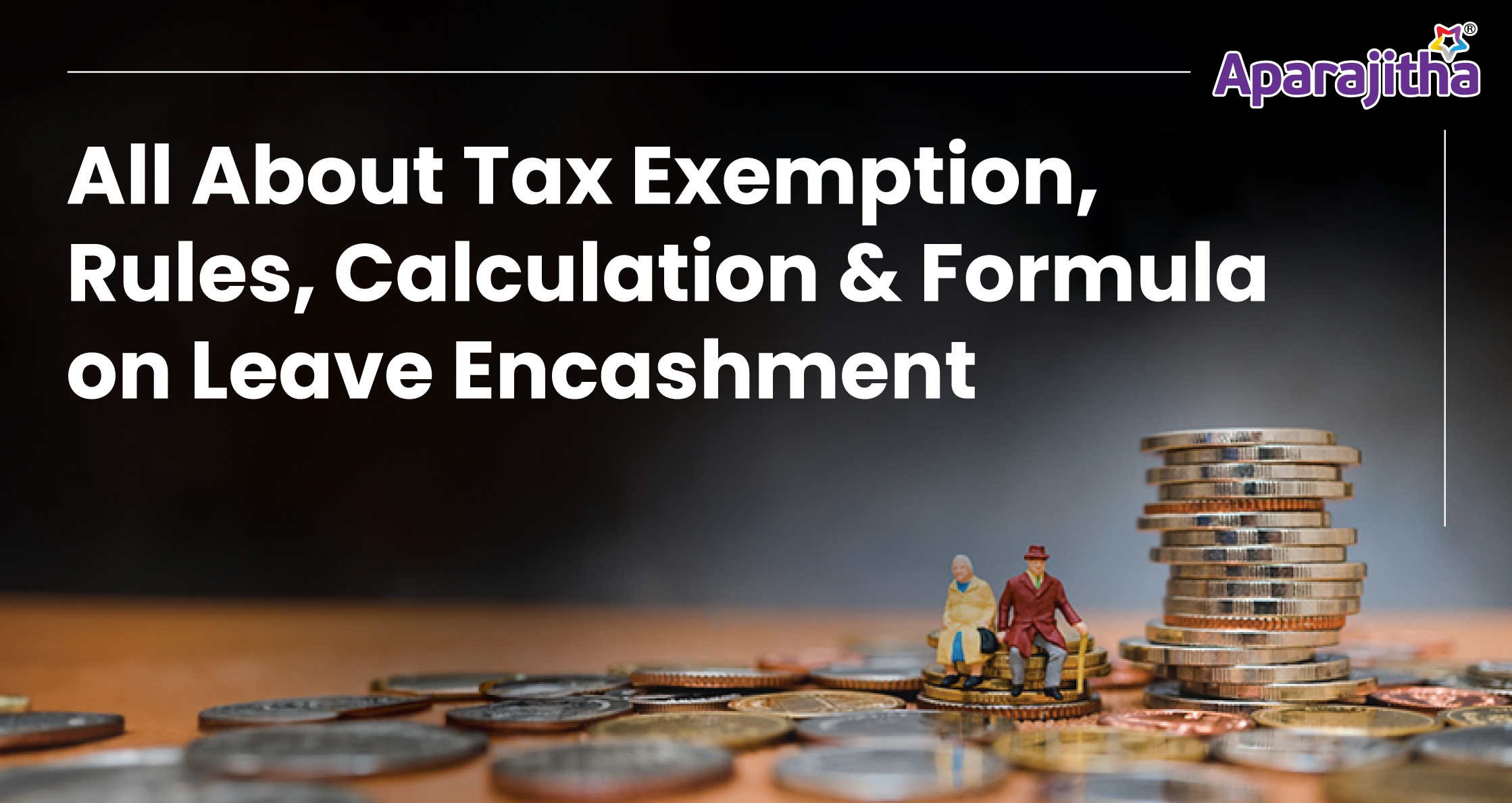The Budget 2023-2024, delivered by Smt. Nirmala Sitharaman, on February 01, 2023, was progressive and took into account the ever-evolving economics in the world. The recommendations given by the Finance Minister took into account the changes which have occurred in the financial situation of the nation. It took into account the requirement to update the old provisions. One such provision which was taken up was the tax exemption on leave encashment.
Leave Encashment – Income Tax Exemption & Rules
Tax exemption on leave encashment on the retirement of non-government salaried employees was fixed at INR 3 Lakhs in 2002 when the highest basic pay in the government was INR 30,000. It was proposed in the Budget that the tax exemption increase to INR 25 Lakhs.
In light of the above, the Central Board of Direct Taxes (“CBDT”) vide notification no. 31/2023, dated May 24, 2023, amended Section 10(10AA)(ii) of Income Tax Act, 1961, and increased the leave encashment exemption limit to INR 25 Lakhs. However, it is not a blanket increase and comes with its own conditions, which are:
1. Leave encashment received during service is taxable for all employees other than an employee of the Central Government or State Government; it must be noted that the leave encashment of a Government employee is fully exempted, without any limits.
2. If leave encashment is received from more than one employer in the same year, the aggregate exemption cannot exceed INR 25 Lakhs;
3. If leave encashment was received from an employer in an earlier previous year and again received from another employer in the relevant previous year, such exempted leaves salary shall be reduced from the exemption limit of INR 25 lakhs;
4. Average salary must be computed based on salary drawn for the ten months immediately preceding the date of retirement;
5. Leave encashment shall be computed with reference to 30 days per year of actual service.
It must be noted that while attaining the benefit of exemption under Section 10 (10AA) (ii) of the Income Tax Act, 1961, only the least of the following can be exempted:
1. Statutory Limit – INR 25 Lakhs
2. Actual leave encashment received
3. 10 Months’ salary (based on the last ten months’ average salary )
4. Cash equivalent of “unavailed leave” of the Assessee at the time of retirement (based on the last ten months’ average salary )
Hypothetical situations
An employee Mr. A is employed with a private organization, drawing a salary of INR 6 Lakhs per month, which includes the dearness allowance. In the year 2023-2024, Mr. A has a total number of 24 leaves per year. In the given year, Mr. A used five days of leaves due to personal reasons. At the end of the year, Mr. A now has 19 leaves remaining. He wants to encash the leaves. Please see the calculations in different situations:
1. In case Mr. A is continuing the same employment the next year
Since Mr. A is still in service of the same employer, the leave encashment received for the 19 days of unused leaves will be taxable and not fall under this exemption.
2. In case Mr. A is changing employment and moving to another organization (for INR 9 Lakhs per month), where he has 18 leaves granted in a year.
In case Mr. A decides not to use the leaves in his next employment, then at the time of retirement, he will be entitled to an exemption of INR 25 lakhs for ALL THE LEAVES UNUSED from both employment. There is a blanket outer limit of INR 25 lakhs.
3. Mr. A is 58 years old now and will retire at the end of the year.
Since Mr. A is now eligible to claim to leave encashment exemption, it will be calculated to arrive at the least amount, which in the present situation is INR 3,80,000/- (INR 20,000 * 19 days) out of the other option under Section 10 (10AA)(ii). Therefore, Mr. A can be exempted up to INR 3,80,000/-.




